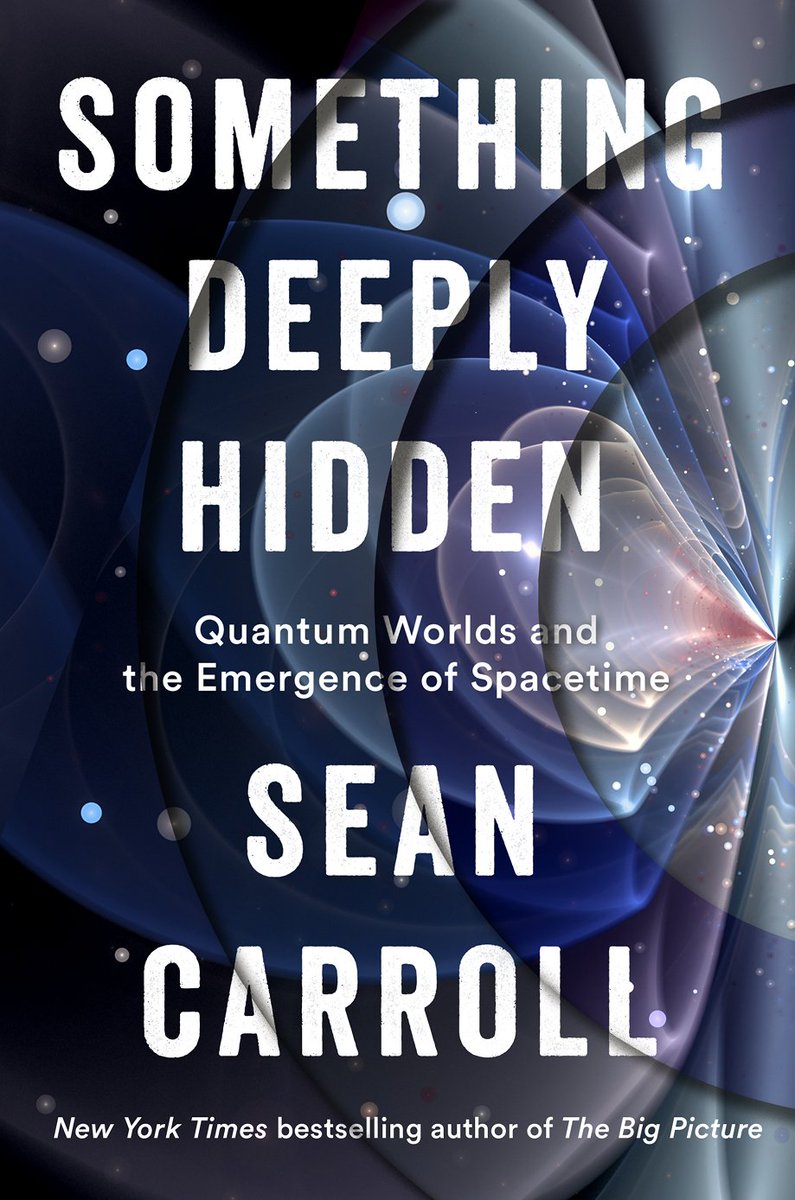
Roger Penrose won the Nobel Prize for showing that black holes are an almost-unavoidable prediction of classical general relativity. Let's take a peek into what that entailed. 1/n
Einstein wrote down the equation for the dynamics of spacetime in 1915. It was complicated, and he was skeptical that it could be solved exactly. For his own investigation of e.g. the orbit of Mercury, he used approximation methods like any good physicist. 2/
But just a month later Karl Schwarzschild, taking time off between battles in the German army, found an exact solution under the assumption of perfect spherical symmetry. Tragically, Schwarzshild died of pemphigus a year later. 3/
Schwarzschild's solution gives the metric tensor - a mathematical way of expressing the geometry of spacetime. But at certain locations the metric seemed to become infinitely big - a singularity. What was up with that? 4/
Eventually physicists understood that one of the supposed singularities, at the "Schwarzschild Radius" r = 2GM, was just a mathematical artifact, and was absent in better coordinate systems. We now know this radius defines the event horizon of a black hole. 5/
Once anything falls inside the event horizon, it can never escape back to the outside world (according to classical general relativity). To do so would require moving faster than light, which is a no-no. 6/
But another singularity, at r = 0, was more serious. It represents a true blowing-up of the physical curvature of spacetime. General relativity seems to predict that general relativity itself starts to fail at this singularity. Or something. 7/
Maybe there is no physical way to make black holes? But in 1939 Robert Oppenheimer and Harlan Snyder showed that matter could collapse beyond the event horizon, apparently creating a black hole. 8/
Aside: "r" is the radial coordinate, the distance from the center. But spacetime is tricky, and inside the Schwarzschild radius the r coordinate points along time, not in a direction of space. r=0 isn't the center of the black hole, it's in the *future*. 9/
Anyway: one might guess that the r=0 singularity was a different kind of mathematical artifact, arising from the initial assumption of perfect spherical symmetry. That's what Penrose disproved; singularities are inevitable in certain circumstances. 10/
He built on a fundamental result by Amal Raychaudhuri and Lev Landau. They (independently) showed how to characterize the focusing and twisting of a group of nearby particles floating through spacetime. en.wikipedia.org/wiki/Raychaudh… 11/
Gravity is attractive. The Raychaudhuri equation shows that a group of particles initially at rest with respect to each other will come together, and eventually their paths will cross. The first baby singularity theorem (though not a worrisome infinite-curvature singularity). 12/
Penrose's breakthrough (grossly simplified!) was to level-up differential geometry, the study of curvature at local points in spacetime, to differential *topology* - global properties of the manifold that are implied by that curvature. 13/
In particular he defined a "closed trapped surface" - a spherical region in space with the property that its area would decrease in any future direction, no matter how it evolved. Why? Because spacetime itself was collapsing. 14/
Then he showed (1965), using Raychaudhuri-like reasoning, that whenever you had a closed trapped surface, some future-pointing trajectories would be "incomplete." A fancy way of saying "they would hit a singularity." 15/
Basically Penrose eliminated the need for simplifying assumptions like spherical symmetry by surrounding regions of space in an inescapable mathematical cage, with nowhere to go but to collapse to a singular point. 16/
Soon thereafter, Stephen Hawking would make his bones by playing Penrose's movie backwards, showing that classical GR also predicts a singularity in the past, at the moment of the Big Bang. 17/
Singularities probably aren't physically real; they're a reminder that a classical theory like GR will break down under extreme circumstances. Hopefully quantum gravity comes to save the day, but details are sketchy at this point. 18/
Penrose has gone on to do many other cool things, as this excerpt from his Wikipedia page shows. One of the most creative mathematical physicists of the last century. 19/19
en.wikipedia.org/wiki/Roger_Pen…
en.wikipedia.org/wiki/Roger_Pen…

• • •
Missing some Tweet in this thread? You can try to
force a refresh




